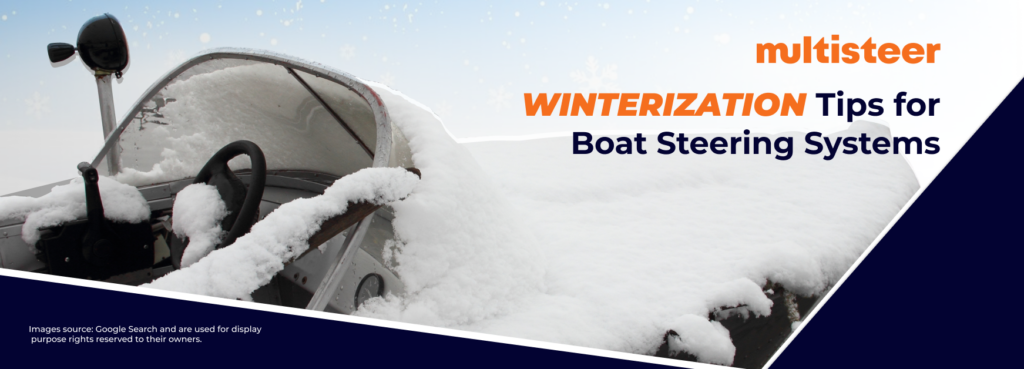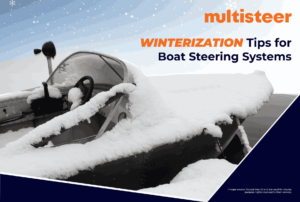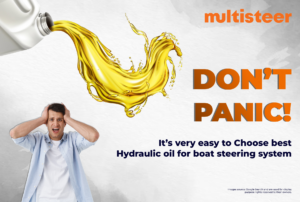Essential Maintenance and Preparation
As winter approaches in various regions, boat owners often prepare their vessels for months of dormancy. For those with hydraulic or power-assisted boat steering systems, the cold season poses unique challenges. Proper winterization not only preserves the integrity of your steering system but also ensures smooth performance when boating season resumes. This article will guide you through essential maintenance steps, fluid checks, storage best practices, and ways to prevent and troubleshoot potential cold-weather issues.
Thank you for reading this post, don't forget to subscribe!
Why Winterization is Crucial for Boat Steering Systems
Boat steering systems, particularly hydraulic and power-assisted ones, are precision-engineered for durability and performance. However, cold weather can cause problems like fluid thickening, condensation, and corrosion. Neglecting your system’s winterization can lead to costly repairs or even compromise safety when your boat is back on the water. To prevent these issues, you must winterize the system properly by following a comprehensive plan.
Inspecting the Steering System for Wear and Tear
Before performing any specific winterization tasks, start by thoroughly inspecting the steering system. Look for signs of wear and tear, such as:
- Leaks: Check for any visible hydraulic fluid leaks around the hoses, connections, or cylinder. Address these immediately by replacing damaged components.
- Corrosion: Rust or other forms of corrosion can appear on metallic parts of the steering system. Clean any rusted areas and apply anti-corrosion spray to prevent further damage during storage.
- Loose Connections: Ensure that all fasteners, bolts, and connections are tight and secure. Vibrations from regular use can cause loosening, which may worsen over the winter.
Hydraulic Fluid Checks
One of the most critical aspects of winterizing a hydraulic boat steering system is ensuring that the hydraulic fluid is in optimal condition. Here’s how to go about it:
- Check Fluid Levels Start by checking the hydraulic fluid level in the system’s reservoir. Low fluid levels can allow air to enter the system, causing steering issues and potentially leading to freezing problems. If the fluid level is below the recommended line, top it off with the manufacturer-recommended hydraulic steering fluid.
- Inspect Fluid Quality Over time, hydraulic fluid can degrade due to contaminants such as moisture or dirt. Before winter storage, inspect the fluid for cloudiness or discoloration. If the fluid appears murky or has particles in it, drain and replace it with fresh fluid. Remember that old or contaminated fluid is prone to freezing, reducing the system’s performance when temperatures drop.
- Bleed the Systems After topping up or replacing the hydraulic fluid, it’s important to bleed the system to remove any trapped air. Air bubbles can compromise steering performance and may exacerbate fluid expansion and contraction during cold weather. Follow the manufacturer’s instructions to properly bleed the system, ensuring that it’s free of air pockets.
Preventing Cold-Weather Issues
Cold weather can lead to specific issues for hydraulic and power-assisted steering systems, such as fluid freezing, condensation, and seal damage. Preventative measures will ensure these problems are minimized.
- Use the Right Fluid: Ensure that you’re using hydraulic fluid specifically designed for low-temperature operation. Some fluids are formulated to remain stable in freezing conditions, reducing the risk of thickening and ensuring that the system remains responsive. We recommend using Multisteer HO-150 Hydraulic Oil
- Avoid Moisture Accumulation: Moisture is one of the primary causes of hydraulic system failure during winter. If water finds its way into the hydraulic lines, it can freeze and expand, damaging the system’s components. After winterizing the fluid, make sure the system is sealed tightly, and avoid storing the boat in damp environments. If condensation forms inside the system, it can create significant issues, so keep your storage area dry and well-ventilated.
- Prevent Freezing: Even the highest-quality hydraulic fluid can become more viscous in extreme cold, affecting performance. Storing the boat in a temperature-controlled environment or using engine block heaters can help prevent freezing. If storing the boat outdoors, consider using a quality boat cover or tarp to shield the steering system from direct exposure to freezing temperatures.
Proper Storage for Boat Steering Systems
Proper storage is crucial to protect your boat steering system over the winter. Follow these steps for optimal storage:
- Tilt and Positioning: If your boat has an outboard engine, tilt it up so that water drains from the steering components and fluid reservoirs. This prevents water from freezing inside the lines and causing potential damage.
- Protecting Cylinders and Rods: For hydraulic systems, particularly those with exposed steering cylinders and rods, apply a protective lubricant or marine-grade grease to prevent rust and corrosion. This also keeps moisture from adhering to sensitive components. Additionally, use cylinder covers to shield the rods and seals from debris and moisture during storage.
- Keep It Covered: Whether storing your boat in a garage, boathouse, or outdoor area, ensure that the entire steering system is well-covered. A high-quality, breathable boat cover can protect the system from freezing rain, snow, and excessive moisture, all of which can damage both hydraulic and mechanical components.
Troubleshooting Potential Cold-Weather Issues
Sometimes, despite your best efforts, winter weather can cause issues with your steering system. Here’s how to address common cold-weather problems:
- Stiff Steering: If you find the steering system is stiff or unresponsive after winter, the hydraulic fluid might have thickened due to cold temperatures. Warm the engine or store the boat in a heated area before testing the steering again. If the problem persists, inspect the fluid and bleed the system to remove any air pockets.
- Fluid Leaks: Extreme cold can cause seals and O-rings to shrink, leading to fluid leaks. Check all hydraulic connections for signs of leaks. In case of significant leakage, inspect and replace damaged seals, ensuring proper lubrication and assembly.
- Air in the System: If the steering feels unresponsive or you hear unusual noises, air may have entered the hydraulic lines during the winter. Re-bleed the system to remove any trapped air and restore smooth operation.
Regular Checks Throughout Winter
If your boat is stored outdoors or in fluctuating temperatures, it’s important to perform periodic checks on the steering system throughout the winter months. Verify that fluid levels remain stable and that there are no visible signs of leaks or damage. Catching problems early can prevent further deterioration during storage.
Conclusion
Winterizing your boat steering system is a critical part of overall vessel maintenance, especially in regions where temperatures plummet. Properly inspecting, maintaining, and protecting your hydraulic or power-assisted steering system will save you from costly repairs and ensure reliable performance once spring arrives. By following the steps outlined here, you can keep your boat’s steering system in peak condition throughout the cold season and be ready for a smooth return to the water when boating season resumes.
Looking for more details on how to winterize your hydraulic boat steering system? Click the below link to learn more.
Learn more about Multisteer Products and visit the website https://multisteer.com or email at customercare@multisteer.com for any questions related to Power-Assisted or Hydaraulic Steering Systems for outboards and inboards.
Set Course for Innovation: Discover the Steerlyte Plus Power-Assisted Steering System at METS 2024
Thank you for reading this post, don't forget to subscribe!...
Read MoreWhat Made Multisteer Globally Appreciated: A Closer Look at the Leading Boat Steering System
Thank you for reading this post, don't forget to subscribe!...
Read MoreWinterization Tips for Boat Steering Systems
Essential Maintenance and Preparation Thank you for reading this post,...
Read MoreDon’t panic! The ultimate guide for choosing a hydraulic fluid
Thank you for reading this post, don't forget to subscribe!...
Read More




